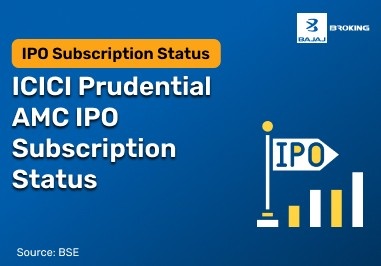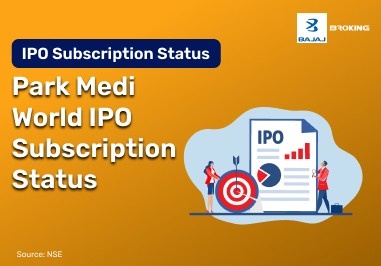Understanding the importance of psychology in price action trading is relevant in the search for the method by which traders react to market data. Price action trading involves decision-making based on price movements without the use of indicators. Charts can indicate price movement, but psychological factors determine the manner in which traders react to price movements. Human responses such as fear, greed, and impulsiveness have a tendency to come about under live decision-making and can propel the outcomes of trades. Price action trading psychology is directed towards internal responses that do not always align with rational approaches, impacting the reliability of performance.
What is Price Action Trading?
Price action trading is a way of analyzing and making trading decisions using the history of an asset's price movement. It relies on historical prices, such as highs, lows, open, and close levels, without the use of technical indicators. Price action traders look at price patterns, chart formations, and significant support or resistance levels to know the behavior of the market. This method frequently employs candlestick patterns to gauge market sentiment. It is used across various timeframes and can be applied to a variety of financial instruments. Price action trading typically involves the detection of market trends, breakouts or reversals by observing proximity price movements and volume activity.
The Impact of Trader Psychology on Price Action Strategies
A trader's state of mind can have an effect on what is perceived with chart patterns and how one might act on it. Varies will have the same pattern depending on emotional or cognitive bias during execution.
1. FOMO: Fear of Missing Out
Fearful of missing something, the traders act hastily in reaction to seeing a solid move in either direction. It would be so due to emotion instead of analysis being used when trades are made. In price action trading, such decisions can ignore essential structural elements or patterns that usually drive entries. The focus is shifted from waiting for a confirmation to acting on market momentum. Trades are entered late, without checking if the setup meets predetermined criteria. Such actions can be counterproductive to consistency in execution because emotional reactions take precedence over a technically driven, systematic approach.
2. Overconfidence and Market Euphoria
After several successful trades, the trader may begin to feel overconfident. This may lead to taking larger-than-usual positions or ignoring key signals of upcoming reversals of market trends. Overconfidence in price action trading systems may lead to a trader discounting established support or resistance levels. In the market, there is always a profound conviction that the prevailing trends will persist forever and ever without a reversal. Such a perception is not consistent with the historically cyclical and evolving nature of financial markets.
3. Hesitation and Fear of Loss
Loss aversion can cause the trade execution to be avoided, even if a price action setup is clear. The trade can be skipped or waited for additional confirmation. This can be due to past losses or doubt. Inconsistent execution becomes the standard, influencing long-term results in a price action trading system.
4. Seeking Confirmation for Existing Beliefs
Traders may search for information or signals that support their current bias. This confirmation bias can distort how patterns are viewed on the chart. For instance, a breakout might be interpreted as a fakeout due to a previously held belief that the market is range-bound. This psychological pattern affects how data is processed and integrated into trading actions.
5. Greed and Delayed Trade Exits
Greed can influence decisions to stay in a trade longer than initially planned. A trade that moves in the trader’s favor may seem like an opportunity to gain more, leading to delayed exits. In price action terms, this may mean ignoring reversal patterns or key resistance levels, usually reversing gains.
Psychological Shifts Across Various Market Conditions
Trader behavior varies across different market phases. Emotions and decisions often shift based on whether the market is trending, ranging, or highly volatile.
1. Psychology in Trending Markets
In trending markets, traders gain confidence and are able to anticipate the continuation of the trend. This attitude shift can lead to decisions being taken prior to waiting for conclusive evidence. Therefore, entries are made before planned times, even with the risk of taking more than planned. The momentum bias influences actions, and hence, the initial risk management gets altered or overridden. This is a common pattern when the market direction is felt to be strong, influencing how traders position and time themselves.
2. Behavior Patterns in Ranging Markets
Range markets can challenge the emotional control of a trader since prices fluctuate without a trend. At these times, a lack of directional movement usually results in frustration and impatience. Traders may react by taking impulsive actions, including taking early breakouts or trying to trade opposite the range without confirmation. These tend to differ from the initial trading plan. Focus and adherence to a specific price action plan become increasingly difficult as emotional responses tend to grow under extended market indecision.
3. Emotional Responses in Volatile Markets
Periods of high market volatility have a tendency to cause uncertainty, leading to stronger emotional reactions such as fear, anxiety, or a rush. These emotions may affect decision-making, especially during sudden price movements or unexpected fluctuations. During such times, traders tend to deviate from their planned strategies or suffer from erratic trade executions. The psychological results triggered by volatile market conditions can influence the manner in which trades are executed, typically altering risk assessment or leading to reactive behavior that differs from the original trading strategy or analysis.
Conclusion
Trader psychology dictates the way price action trading techniques are implemented under actual market scenarios. Emotions like fear, greed, and overconfidence may affect the timing and judgment used in making trading decisions. Being aware of these emotional reactions facilitates the detection of behavioral patterns which tend to develop under stress or uncertainty. These states of mind may change the way traders perceive price movement, support and resistance levels, or chart patterns. Knowledge of psychological responses gives background on why decisions are made at times of volatility or stability. This knowledge is part of analyzing how perception and behavior change during various stages of market activity and trend formation.














